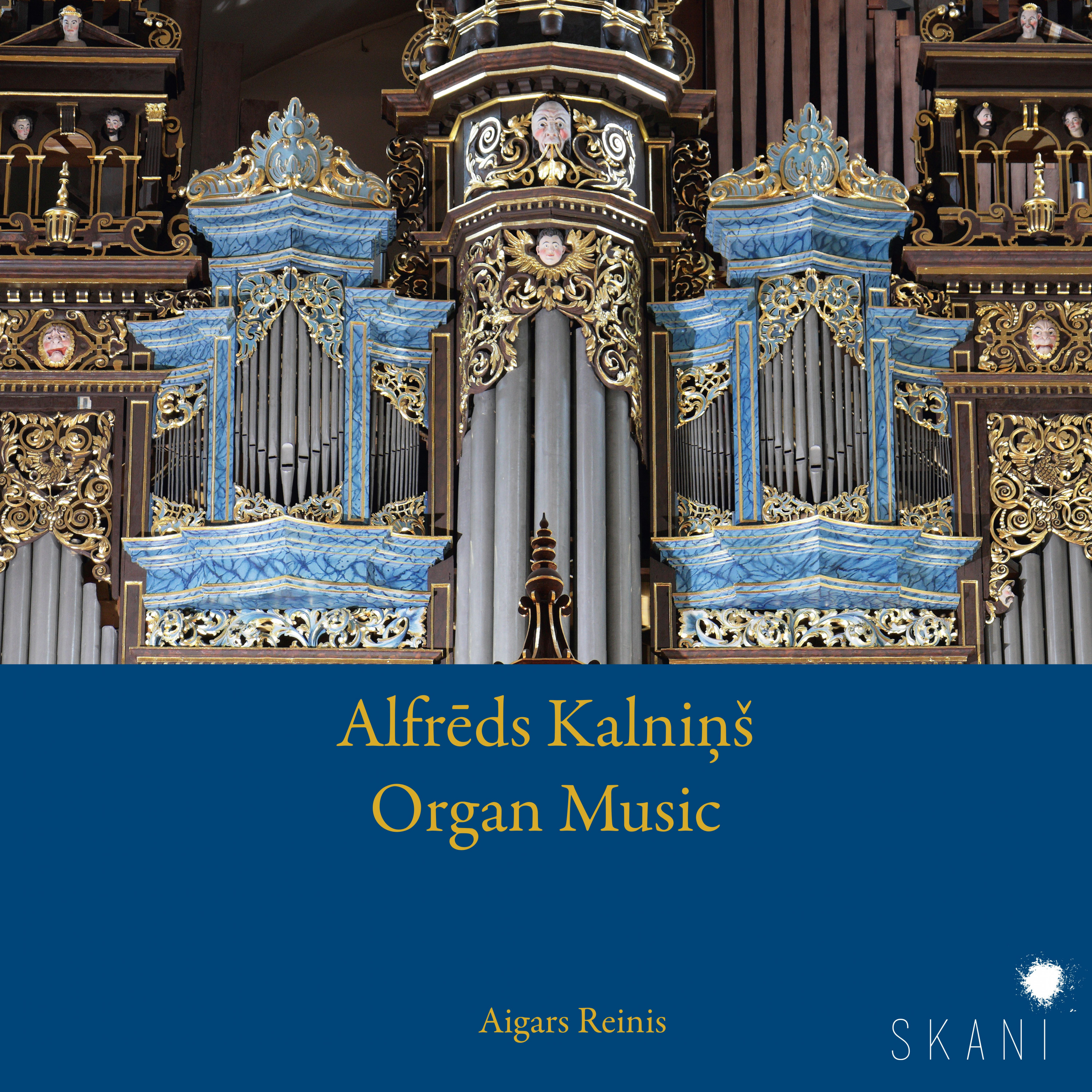Alfrēds Kalniņš (1879–1951) is hardly known in Central Europe, but in his native Latvia he was once the most famous concert organist. Now, for the first time, we can finally get to know him as a gifted organ music composer who need not fear comparison with his French colleagues such as Dupré or Widor. Aigars Reinis, since 2019 music director and organist of Riga Cathedral, on whose main organ the recordings were made, has selected 17 pieces from all creative periods for his double CD, which Kalniņš composed both in his Baltic homeland and in the USA - from 1927 to 1933 he lived in New York - and which are being recorded here for the first time in the world. After his return from the States, Kalniņš was appointed cathedral organist in Riga, so that the works can be heard here on his very own instrument. No less an authority than Aristide Cavaillé-Coll had heard the Walcker organ during a visit to the city of Ulm - where a second "Walcker" of this type stood until the 1960s - praised it in the highest terms and took it as his model. Today, the organ, built in 1882/1883, with four manuals, 116 stops, 6718 pipes and last restored in 1984 by the Flentrop company, is considered one of the most powerful-sounding romantic instruments in the world. The colourful fireworks that Reinis "ignites" on his album leave not the slightest doubt about this.
Burkhard Schäfer
"Musik & Theater"
________________
A full CD recording of Latvia’s greatest organist and improviser is long overdue. Alfrēds Kalniņš, also the founder of Latvian National Opera, spent many productive years working in the USA before returning to preside over the remarkable Walcker organ of Riga Cathedral from 1933. Aigars Reinis is the current organist of Riga Cathedral and draws a wide-ranging palette of sounds from one of the best-preserved examples of German Romantic organ building. The most significant works here are two sets of variations, one on a theme by Kalniņš's son and another, on a theme by Jāzeps Vītols, was a form of protest against the Soviet regime and to be the composer’s last organ composition. There is much to enjoy across the two hours of music extremely well captured on this recording.
★★★★★
CHOIR&ORGAN, August 11, 2023
________________
Although best remembered as the founder of the national Latvian opera and for his opera Baņuta (1920), Alfrēds Kalniņš was also the country’s most famous concert organist of his time, having studied the instrument with Louis Homilius at the St. Petersberg Conservatory between 1897 and 1901. His love of composition was also fired up during this period when he began composing songs. By 1951, the year of his death, he’d written 250 of them. From early on, however, the organ began to play a significant role, and he held a number of organist posts throughout his life. He spent the years 1927-1933 in the United States, and it was during his tenure as organist at Christ Church in New York that he met composer, organist and conductor Samuel Baldwin, who encouraged him to compose for the organ. Many of the works found in this collection post date his American sojourn.
The organ music spans a compositional period of almost fifty years between 1901 and 1949. It’s tonally pleasing, melodious, accessible and well crafted. The earliest piece is the Fantasia on track 1 of CD 1, which Kalniņš penned in 1901 when he was studying at the St. Petersberg Conservatory. It’s a very accomplished work for a young student still honing his skills. The composer, himself, considered it an improvisation, and it does sound very free-flowing and spontaneous. Pastorale No 1 of 1913 is lyrically attractive, with a ruddily bucolic complexion. Reinis conjures up a magical scene with some radiant, colourful registrations. Cloister Idyll explores some spectral harmonies, with everything kept under wraps. In total contrast is Procession, a melding of magisterial grandeur and architectural magnificence. Variations on a Theme by Jānis Kalniņš takes as its theme a hymn-like melody written by Alfrēds’ son, who was also a composer in his own right.
CD 2 opens with a piece from 1938 titled Agitato. Constant movement is enriched by uninhibited modulations and exciting rhythmic variations. Sabbath Eve, which follows, was written a year later. It couldn’t be more different, radiating a peaceful calm. There are two skilfully adapted transcriptions that Kalniņš made from his opera Baņuta. The virtuosic Prelude of 1941 demonstrates the composer’s consummate handling of rapid changes of harmony. A chorale “Jesus, my Son” was composed by Jāzeps Vītols (1863-1948), who was the most prominent Latvian composer of the first half of the 20th century. Kalniņš’ twelve variations on the theme reveal astonishing compositional flair and imagination. Reinis delivers a stunning performance in terms his commanding technique and ingenious registration choices, which add both colour and spice in abundance.
The four manual organ of Riga Cathedral, built by E. F. Walcker and Co. in 1884, underwent a restoration in 1984. It’s a fine-sounding instrument and regarded as one of the finest Romantic-style organs in Europe. The sound is superb, due to the adept skill of the engineers.
These delightful works are persuasively and authoritatively played, showcasing Aigars Reinis’ sensitive and subtle artistry. The booklet notes, in English and Latvian, are comprehensive, and provide all the necessary information. One minor irritation, though, is that some of the pages are printed in pale orange ink, which I found a strain on my eyes.
An attractive album which will appeal to any fan of organ music.
Stephen Greenbank
www.musicwebinternational.com 21/05/2023

